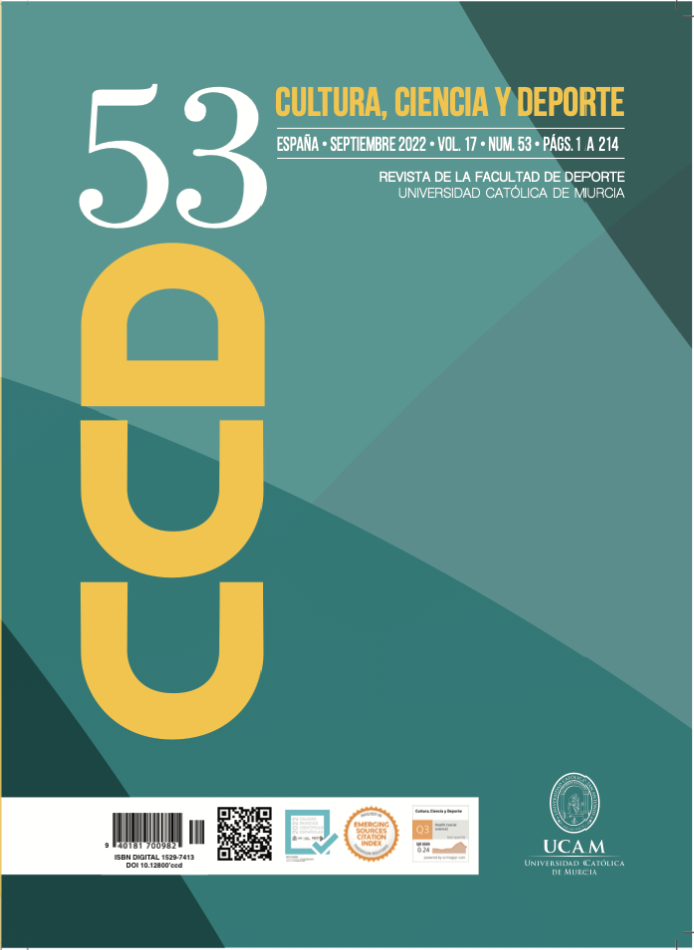Effects of different strength training intensities on health-related parameters towards engaging in physical activity in elderly.
TOWARDS ENGAGING IN PHYSICAL ACTIVITY IN ELDERLY
DOI:
https://doi.org/10.12800/ccd.v17i53.1833Abstract
To assess the effects of a progressive resistance training program at different intensities on health-related quality of life, anxiety, and motivation towards engaging in physical activity among older people. Prospective, municipal multi-centers, non-randomized controlled trial. 76 older adults were assigned to: vigorous intensity (n = 19), vigorous-moderate intensity (n = 21), moderate intensity (n = 19), or control group (n = 17). The exercise groups performed six exercises with elastic bands per session, twice a week, for 8 months. Vigorous intensity, vigorous-moderate intensity and moderate intensity group performed 6, 10 and 15 repetitions, respectively. Health-related quality of life was assessed using the 36-Item Short Form Health Survey, trait and state anxiety using the State-Trait Anxiety Inventory, and motivation towards engaging in physical activity using the Behavioural Regulation in Exercise Questionnaire. The moderate intensity group showed a significant increase in the summary of the physical components of health-related quality of life (p = .001; ηp2 = .158) and a significant decrease in external regulation (p = .002; ηp2= .145) and amotivation (p = .013; ηp2 = .97). In contrast, the vigorous intensity group showed a significant increase in state anxiety (p = .004; ηp2 = .076) and a significant decrease in introjected regulation (p = .018; ηp2 = .097). Moderate intensity strength training programs are best suited for older adults because they improve health-related quality of life and decrease less self-determined forms of regulation, all without increasing anxiety states.
Published
How to Cite
Issue
Section
License
Copyright (c) 2022 Creative Commons Attribution License

This work is licensed under a Creative Commons Attribution-NonCommercial-ShareAlike 4.0 International License.
The authors who publish in this journal agree with the following terms:
- The authors retain the copyright and guarantee the journal the right to be the first publication of the work as well as licensed under a Creative Commons Attribution License that allows others to share the work with recognition of the authorship of the work and the initial publication in this journal.













